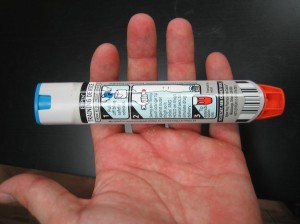Iodine is basically a trace element that naturally occurs in the human body. Any allergic reaction often interpreted as iodine allergy is actually a reaction to the muscle protein present in shellfish. Always remember that an allergic reaction can often be life-threatening. It is important that you learn how to diagnose an allergic reaction since it is an essential step during first aid and can help save a life.
Steps in diagnosing an iodine allergy
- You have to ask the individual how long he/she came in contact with shellfish. Take note that an allergic reaction can manifest within thirty minutes after ingesting the reactive protein.
- Check the soft tissues for any swelling such as the mouth, lips, throat and tongue. In case there is swelling in any of these areas, you have to bring the individual right away to the emergency department at the nearest hospital. If the swelling is not treated as soon as possible, it can block the throat of the individual that will close off the airway, thus making it difficult for the individual to breathe.
- You have to check for any internal irritation or swelling such as wheezing, coughing, diarrhea or even vomiting. Take note that even if the exterior signs of swelling are not present, it is vital to bring the individual to the emergency department if these symptoms occur. Always bear in mind that symptoms are indications of a worsening and possible life-threatening internal condition.
- Watch out for signs of itchy, runny nose and red, watery eyes. These symptoms can indicate an allergic reaction. If the individual just recently came in contact with shellfish, it simply means that the body reacts to it.
When to call for emergency assistance?

You have to call for emergency assistance if an individual is highly allergic and experiencing a whole body allergic reaction which is called as an anaphylactic shock. Take note that the symptoms usually manifest in a matter of minutes after eating or even touching the shellfish. Evident swelling manifests and followed by low blood pressure, loss of consciousness and respiratory distress. In most cases, individuals who are prone to allergic reactions usually bring along an epinephrine auto-injector wherever they go. If this is the case, inform the operator about the epinephrine auto-injector and ask if you can administer the medication.
You can also gather information for the medical team so that it will be easier for them to decide on the appropriate course of action to take. You have to ask the individual if what was exactly eaten, how much was eaten before the reaction manifested, time span after the reaction occurred, has experienced the same reaction before and if there was any medication taken. In case there was something taken, ask if it eased any of the symptoms and how the shellfish was cooked and stored.
